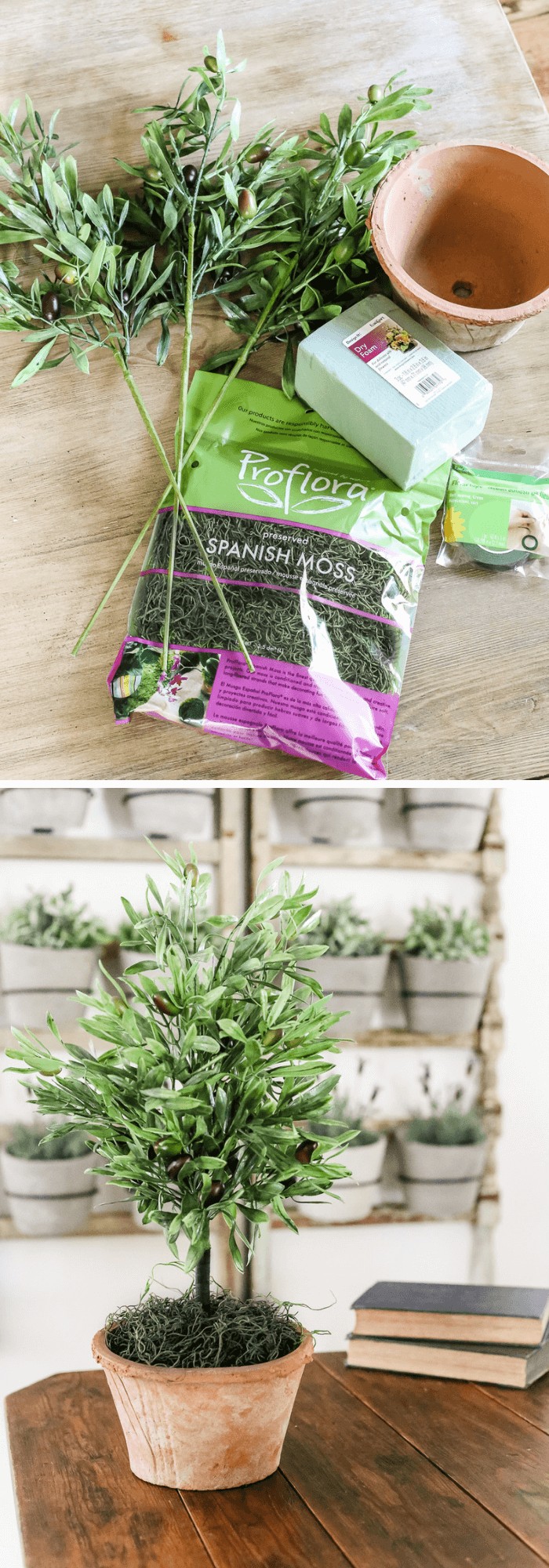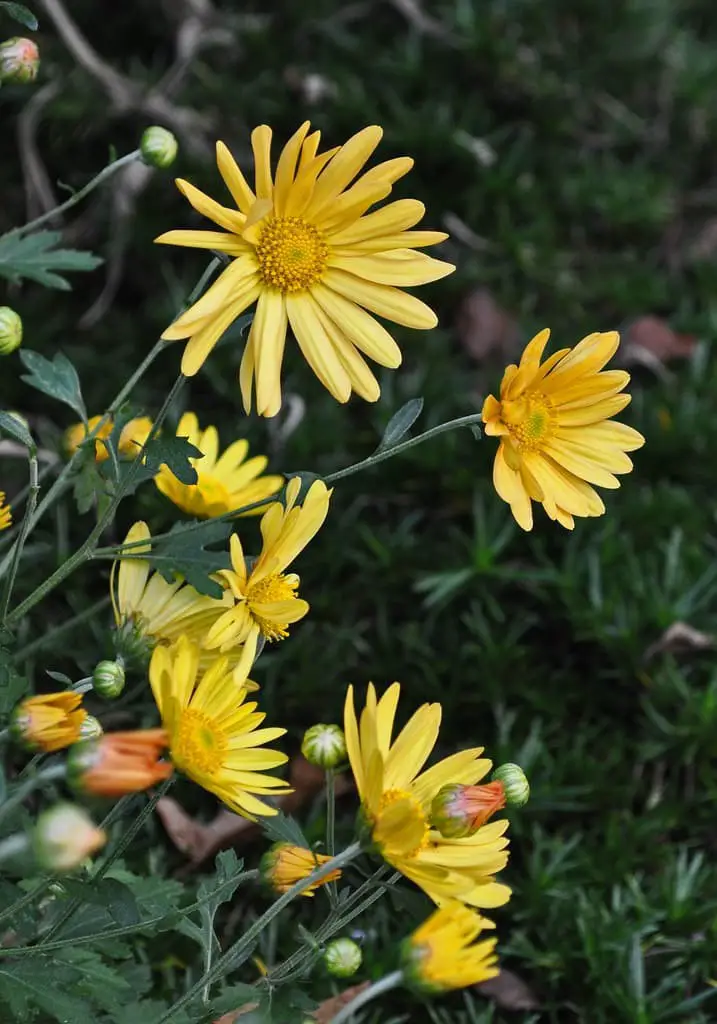16 Best Medicinal Plants And Their Uses (With Names And Pictures)
Medicinal plants have been a cornerstone of traditional medicine for centuries, with many modern prescriptions derived from plants cultivated for their medicinal properties. When selecting plants for a garden, one may consider aesthetic appeal, edible value, or the plant’s healing properties. This article will delve into the history and modern use of medicinal wild plants, as well as provide an overview of the scientific proof supporting their effectiveness.
The practice of using plants for medicine is rooted in ancient traditions such as herbal medicine, naturopathy, homeopathy, and aromatherapy. While some may be skeptical about the efficacy of plant-based remedies, the results can be remarkable. In this article, we will explore a selection of common annuals and perennials with medicinal properties, including Garlic (Allium sativum), St.
John’s Wort (Hypericum perforatum), Feverfew (Chrysanthemum parthenium), Milk thistle (Silybum marianum), Poppy (Papaver somniferum), Marijuana (Cannabis sativa), Violet, Coriander (Coriandrum sativum), Basil, Valerian, Common Foxglove, and Yarrow (Achillea millefolium). We will also touch on the medicinal properties of certain trees, including Willow (Salix spp.), Mimosa (Mimosa tenuiflora), and Cinchona bark (Cinchona spp.).
History of Medicinal Wild Plants
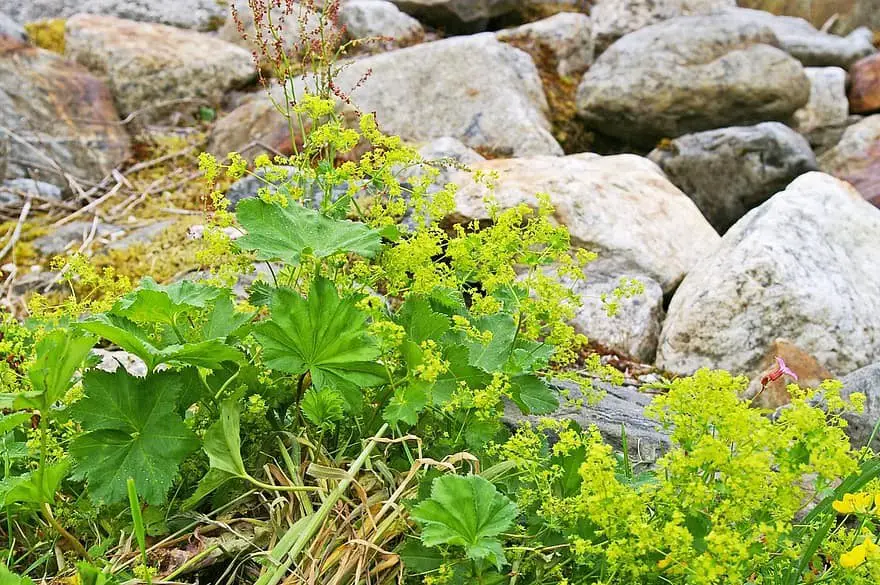
Long before the advent of modern medicine, early settlers relied heavily on nature’s bounty to find cures for common ailments. In fact, many of these natural remedies have since been scientifically validated, providing insight into the medicinal properties of plants that were once revered by our ancestors.
For early settlers, God and the divine creations of nature held all the answers for humanity.
By observing the world around them, they believed that nature had the power to heal any affliction. And, surprisingly, this approach gave them a significant advantage over modern medicine – the ability to harness the keen power of observation.
Many of the medicinal properties attributed to wild plants were gleaned through simple observation and experimentation.
Plants like dandelion and sorrel were deemed spring tonics due to their high levels of vitamin C, which were believed to cure scurvy caused by a lack of fresh vegetables during winter droughts.
Early Use of Medicinal Wild Plants
Medicinal wild plants were traditionally used to treat a range of health issues, including digestive problems, respiratory conditions, skin afflictions, and women’s health concerns. Some plants possessed general medicinal properties, such as blood purifiers or liver tonics, which could be applied more broadly. In the realm of folk medicine, the doctrine of signatures played a significant role in determining the use of these wild plants.
This concept, first proposed by German mystic Jakob Boehme, posits that God imbued plants with signs that provide humanity with the key to their effective application. According to this doctrine, plants that resemble human or animal features were believed to possess properties that could be used to treat similar conditions in humans. For instance, toothwort’s large, tooth-like leaves led folk healers to use it as a remedy for toothaches.
Similarly, heal-all’s purple flowers, which resembled an open mouth, were seen as a cure for sore throats and fevers. Boehme offered numerous examples of plants that bore human or animal features, providing further evidence for the doctrine of signatures.
Modern Use of Medicinal Plants
The global demand for medicinal plants has reached unprecedented heights, with the dietary supplements market raking in over $4 billion in 2005 alone. As a result, many individuals turn to herbal remedies as a means to alleviate symptoms related to depression, weight management, and menopausal concerns.
Interestingly, while the significance of wild plants and their medicinal properties remains deeply rooted in traditional practices, contemporary advancements in scientific research and federal regulations have significantly impacted the industry. Amidst this backdrop, lingering questions persist regarding the veracity of these claimed medicinal properties.
Scientific Proof of Medicinal Properties
While many modern pharmaceuticals owe their existence to Nature’s bounty, the world of folk medicine also holds hidden gems. It’s estimated that rainforests alone provide the basis for over 25% of Western drugs and supplements, but this is only half the story. Plants like wild mustard, which contain isothiocyanates recognized by the National Cancer Institute as potential cancer-fighting agents, demonstrate the potential of common wild plants to treat various ailments.
Other examples include yucca and stinging nettle, both with anticancer properties. Moreover, science has validated many traditional remedies, such as those involving purple coneflower or Echinacea. The precursor to aspirin, salicyclic acid, is derived from willow bark, underscoring the importance of these natural sources. While not all uses for medicinal plants have been proven, it’s essential to exercise caution when exploring their applications. If in doubt, consult a medical professional.
The Practice of Plant Medicine

Plant medicine encompasses a range of disciplines that utilize the healing properties of plants to promote health and wellness. While often used interchangeably, terms like herbal medicine, homeopathy, naturopathy, and aromatherapy have distinct nuances. The practice of plant medicine has ancient roots, with evidence of its use dating back centuries in cultures such as those of the Egyptians, Chinese, and Indians.
The Ebers Papyrus, an ancient Egyptian medical text, provides a comprehensive record of plant-based remedies used to treat various ailments. Over time, these traditional practices have evolved, incorporating modern scientific understanding and giving rise to new forms of plant medicine like naturopathy, homeopathy, aromatherapy, and herbal medicine. Despite their shared roots, each discipline has its unique approach, methodology, and benefits.
The Definition of Herbal Medicine
In the realm of herbal medicine, practitioners harness the therapeutic potential of various plant parts – flowers, seeds, roots, bark, leaves, or berries – to promote wellness. Also known as botanical medicine, herbalism, or phytomedicine, this ancient practice is gaining traction in the conventional medical community as rigorous research, scrutiny, and quality control underscore the efficacy of herbal remedies, ultimately paving the way for their integration into mainstream healthcare.
The Definition of Naturopathy
Naturopathic medicine is an approach to healthcare that empowers patients by teaching them how to harness their body’s innate ability to heal through a range of natural solutions. These solutions may include dietary changes, lifestyle modifications, exercise regimens, and the incorporation of natural therapies such as herbal extracts and homeopathy. What sets naturopathy apart from other forms of medicine is its unique blend of traditional practices and conventional scientific methods.
By combining these two approaches, naturopaths aim to provide patients with a holistic treatment plan that addresses the root causes of their health concerns rather than just treating symptoms.
The Definition of Homeopathy
Homeopathy is built upon the fundamental principle of treating ‘like with like’, where natural preparations that can induce similar effects to the symptoms are consumed. This alternative medicine approach relies heavily on the concept of highly diluted remedies, which contain negligible or no pharmacologically active ingredients.
When prescribing a remedy, homeopathic doctors not only consider a patient’s physical state but also their mental well-being, taking into account the intricate connection between body and mind.
The Definition of Aromatherapy
The origins of modern aromatherapy date back to 1928, when French chemist Rene-Maurice Gattefosse is credited with its discovery. While ancient civilizations such as the Egyptians used aromatic plant extracts for medicinal and cosmetic purposes, their methods differed significantly from those employed today in the production of essential oils.
These concentrated plant extracts, known as essential oils, are the lifeblood of plants and can be derived from various parts including roots, flowers, leaves, berries, and seeds through different extraction methods. Due to their complex chemical composition, essential oils require specialized knowledge to use effectively, making it essential for practitioners to undergo comprehensive training in aromatherapy.
The Effectiveness of Plant Medicine
While the validity of herbal medicine, naturopathy, homeopathy, and aromatherapy continues to spark debate within the mainstream scientific community, a growing number of individuals are rediscovering the therapeutic potential of plant-based remedies. This resurgence is not unlike the centuries-long tradition of indigenous cultures, such as Native Americans, Maori, and Aborigines, who have long relied on botanicals for medicinal purposes.
As plant medicine continues to gain traction in modern society, it is becoming increasingly clear that its application can coexist with conventional scientific practices, allowing for a harmonious blend of both worlds. In fact, the convergence of traditional plant-based knowledge and contemporary research offers a unique opportunity for interdisciplinary collaboration, fostering a more holistic approach to healthcare.
Common Annuals and Perennials
Garlic (Allium sativum)

Garlic’s impressive resume boasts not only its potential to repel pests, but also its medicinal prowess. A study conducted by Peter Josling at the Garlic Center in Great Britain found that garlic was able to prevent the common cold in nearly two-thirds of participants. Furthermore, anecdotal evidence suggests that garlic may have additional benefits, including the ability to lower blood pressure and function as an antioxidant.
Interestingly, researchers are also exploring topical garlic preparations – along with cannabis – for their potential to combat antibiotic-resistant staph infections like MRSA.
St. John’s Wort (Hypericum perforatum)

While St. John’s Wort is often viewed as a weed, its potential therapeutic benefits cannot be ignored. In fact, studies have shown that it can be just as effective as some prescription antidepressants in treating depression, with the added advantage of fewer side effects. A notable example is the research conducted by Klaus Linde at the Center for Complementary Medicine Research in Muncih, Germany. After 12 weeks of daily use, the outcomes were surprisingly similar to those achieved with St.
John’s Wort and commonly prescribed antidepressants, further solidifying its potential as a natural treatment option.
Feverfew (Chrysanthemum parthenium)

Feverfew, often cultivated for its ornamental value, has also been found to possess therapeutic potential in treating migraines. Its mechanism of action involves constraining the release of serotonin, a process similar to that employed by acute migraine medications. As an anti-inflammatory agent, feverfew specifically targets blood vessels within the brain.
While it is commonly taken as a daily supplement, its efficacy lies more in preventative measures than on-demand treatment for sudden or severe migraines.
Milk thistle (Silybum marianum)

The impressive benefits of this natural substance extend to its ability to enhance liver function, making it a valuable asset for those seeking to support their overall health. In Europe, it has been utilized as a treatment for liver toxicity caused by mushroom or alcohol consumption. Furthermore, research suggests that it may also be effective in combatting the symptoms of hepatitis, and could potentially even help to regulate cholesterol levels.
Poppy (Papaver somniferum)

Poppy plants thrive in a wide range of climates and can be grown almost anywhere. As a reseeding annual, they are remarkably resilient and can survive even the most extreme climate fluctuations and poor soil conditions. When mature seed pods are carefully scored with a knife, they release a milky sap that is collected and dried. This process yields a material rich in morphine, a natural analgesic. According to M. D.
Merlin of the University of Hawaii, the use of opium from poppies has a long history dating back to approximately 4,000 B. C., highlighting the plant’s significance and enduring appeal.
Marijuana (Cannabis sativa)
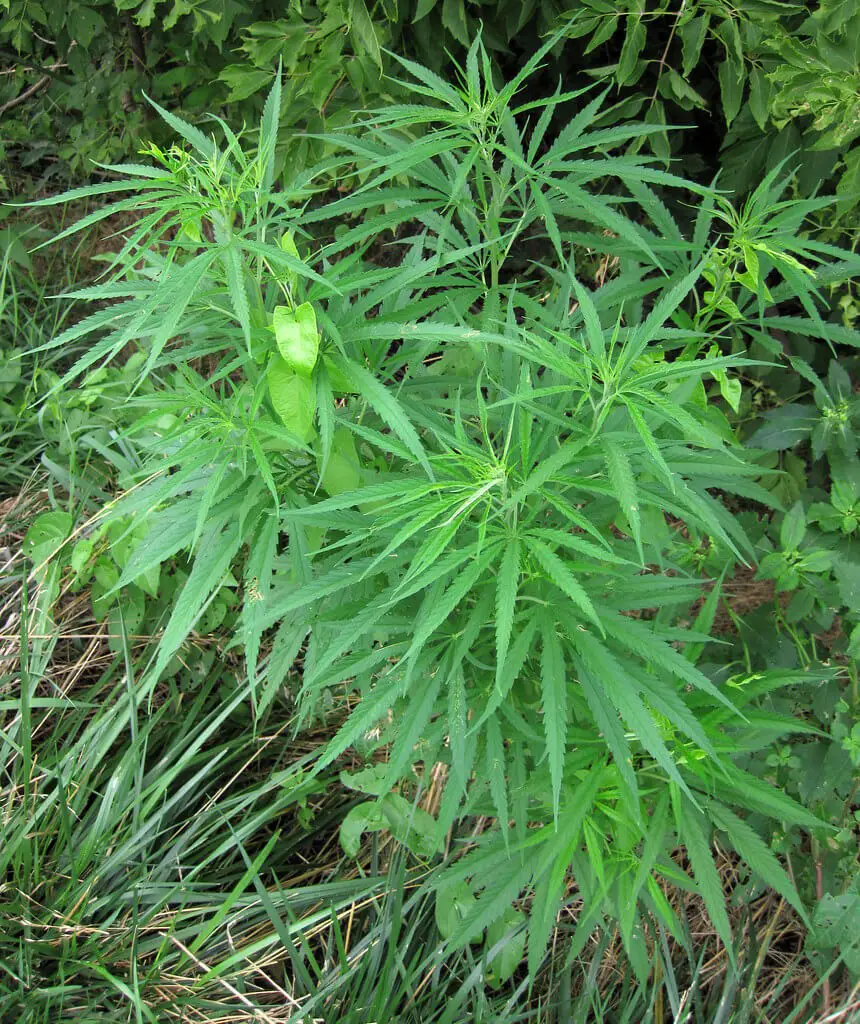
While marijuana has been used for centuries as an intoxicant, its therapeutic potential is equally impressive. Research has shown that cannabis can be effective in treating various health conditions outside of the United States. One of its most promising applications is in managing glaucoma, neuropathic pain, severe nausea, and clinical depression.
Additionally, a compound called cannabidiol has been found to inhibit the growth of cancer cells, as confirmed by studies conducted at Italy’s Universita di Napoli e Universita di Salerno. Interestingly, cannabis itself is an invasive annual that grows in a reseeding manner, earning it its nickname.
Violet

The Sweet Violet’s dual nature is a fascinating aspect of this spring-blooming flower, which has been deeply rooted in European culture for centuries. Not only do Violets hold a special place as a token of love, but they also possess numerous medicinal properties that have been harnessed to treat various common ailments. This multifaceted charm has captivated many throughout history, including the ancient Greeks and Romans who revered the Violet’s fragrance.
In fact, Aphrodite, the goddess of love, was said to hold the Violet as a sacred symbol. Napoleon and Empress Josephine also shared this affection for Violets, with Josephine even incorporating them into her wedding dress design and cultivating them on her French estate at Malmaison. Beyond their romantic significance, Violet flowers and leaves can be dried for potpourri or used fresh in salads and as decorative elements on cakes.
Additionally, the potent perfumery qualities of fresh Violets make them a prized material for crafting absolute perfume.
Coriander (Coriandrum sativum)

Coriander belongs to the Apiaceae (Umbelliferae) plant family, also known as Chinese parsley. Its rich history dates back centuries, with evidence of coriander seeds discovered in the tomb of King Rameses II in ancient Egypt. This aromatic, annual herb is characterized by its hairless stem and delicate white or pink flowers that bloom from June to July. The seeds, which transition from green to brown, are another notable feature of this plant, earning it the synonym coriander seed.
Native to the eastern Mediterranean region and western Asia, coriander has spread to southern Europe, North America, Russia, Romania, and former Yugoslavia. In ancient Greece, physicians utilized coriander for healing purposes, while in Eastern cultures like Chinese and Ayurvedic medicine, its medicinal properties have been valued for centuries.
Basil

Basil, a member of the Lamiaceae family, encompasses numerous varieties, with sweet or French basil (Ocimum basilicum) and exotic basil being the most prevalent species. Notwithstanding their botanical identity, these two types exhibit subtle differences. Beyond these common species, other notable variants include Holy basil (Ocium sanctum), East Indian basil (Ocium gratissimum), bush basil (Ocium minimum), and hairy basil (Ocium canum).
This herb’s versatility is evident in its application not only as a culinary delight, but also in the production of high-end perfumes and soaps. Holy basil, revered for its sacred status in Indian culture, is often cultivated in gardens and temple surroundings to invoke protection and good fortune.
Valerian

Valerian, also known as all heal in medieval times, boasts an impressive array of healing properties that have been utilized to treat a wide range of ailments. During World War I, its roots were used to alleviate the symptoms of shell-shocked war casualties. In the Western world, Valerian has been employed to address insomnia, migraines, rheumatism, dysmenorrhea, and intestinal colic, while in China, it is used to treat back pain, bruises, menstrual difficulties, and colds.
The herb’s versatility extends beyond its medicinal applications, as it also thrives in a variety of environments, growing up to five feet tall and producing pink, white, or purple-white flowers. Its hollow stem and dark leaves are complemented by thick, short roots with a distinctive aroma that can be found above ground. Native to Europe and parts of Asia, Valerian has naturalized in North America and is now cultivated in gardens worldwide.
This herb’s beneficial properties extend beyond the medicinal realm, as it attracts worms and can be used to enrich soil health. To maximize its medicinal potential, gardeners should prune the flowers to allow the roots to absorb all the energy. The essential oil extracted from Valerian’s rhizome roots has a balsamic, musky aroma and is obtained through steam distillation.
Interestingly, this oil’s characteristics can vary depending on the plant species it is distilled from, with Eastern and Western varieties exhibiting distinct differences. With over 150 species of Valerian worldwide, its essential oil’s unique properties make it an attractive subject for further study.
Common Foxglove

Foxgloves have a long history of medicinal use in Europe, where they’re often found in cottage gardens alongside other charming flowers. But it’s essential to remember that these lovely plants are also poisonous and should be handled with care. The common foxglove (Digitalis purpurea) has an ancient name that dates back to Anglo-Saxon times, literally meaning the ‘foxes’ glove’.
Another early name was Folksglove, which is associated with folklore and fairy tales about mythical creatures said to inhabit wooded hollows where the plants grow. The name may also refer to the shape of the flowers, which resemble fingers in a glove. Foxgloves belong to the Figwort family, but should not be confused with other varieties like Digitalis grandiflora or Digitalis lanata.
This biennial or perennial plant can grow up to six feet tall and produces bell-shaped flowers that traditionally come in purple and pink hues, although modern hybridization has introduced new colors. The common foxglove blooms from June to August and is native to Europe, where it’s been cultivated for centuries. It thrives in woodland clearings, forests, and cottage gardens alongside hollyhocks, old-fashioned roses, and fragrant climbing plants.
Foxgloves were introduced to America in the 18th century when their medicinal properties became known. In Europe, they’re famous for attracting bumblebees, while in America, they’re popular with hummingbirds. The leaves of the foxglove are medicinally valuable, despite being highly toxic. Common foxglove is particularly useful in treating heart conditions. It’s also used in homeopathy to address depression, migraine, and insomnia.
However, it’s crucial to note that when using common foxglove medicinally, you must exercise extreme caution.
Yarrow (Achillea millefolium)

The widespread and familiar wild yarrow plant boasts a unique appearance, with knee-high flower stalks topped by tightly packed umbels of small white blossoms that resemble Queen Anne’s lace, but are less lacy and slightly grayish in hue. When the blooms reach their peak, tiny yellow stamens emerge, releasing a sweet honey-like aroma when inhaled closely.
The plant’s basal leaves, which sprout directly from the ground when young, are long, narrow, and feathery, with leaflets that divide into smaller components, creating a soft and gentle texture that is pleasing to touch. The smaller leaves that grow on the flower stems have a similar shape but are less potent medicinally compared to the basal leaves and flowers.
Yarrow thrives in dry fields and can be found in gardens, although it’s said to be more effective when harvested from poor, dry, rocky soils, as herbalist Matthew Wood notes. According to Wood, yarrow’s medicinal properties stem from its ability to open up venous circulation, decongesting capillaries to remove heat and tenderness. The majority of wild yarrow has white flowers, although there are cultivars in yellow, magenta, and other hues.
Some herbalists use yellow yarrow, but most stick to the classic white variety. Energetically, yarrow is known as a protective plant, often used to repel negative energies. It can be taken as a tincture before medical procedures like X-rays to protect against radiation, or burned in ceremony to create a shield of protection. In ancient China, yarrow stalks were famously used to cast the I Ching.
Common Trees
Willow (Salix spp.)

With roots dating back to ancient times, willow trees and shrubs have been a staple of traditional medicine for centuries. Interestingly, it’s the presence of salicylic acid within these deciduous plants that lends them this medicinal significance – the very same compound responsible for aspirin’s pain-relieving properties.
And in fact, as far back as the 5th century, the renowned Greek physician Hippocrates was prescribing willow bark as a natural remedy for fever relief, solidifying its place in the annals of medical history.
Mimosa (Mimosa tenuiflora)
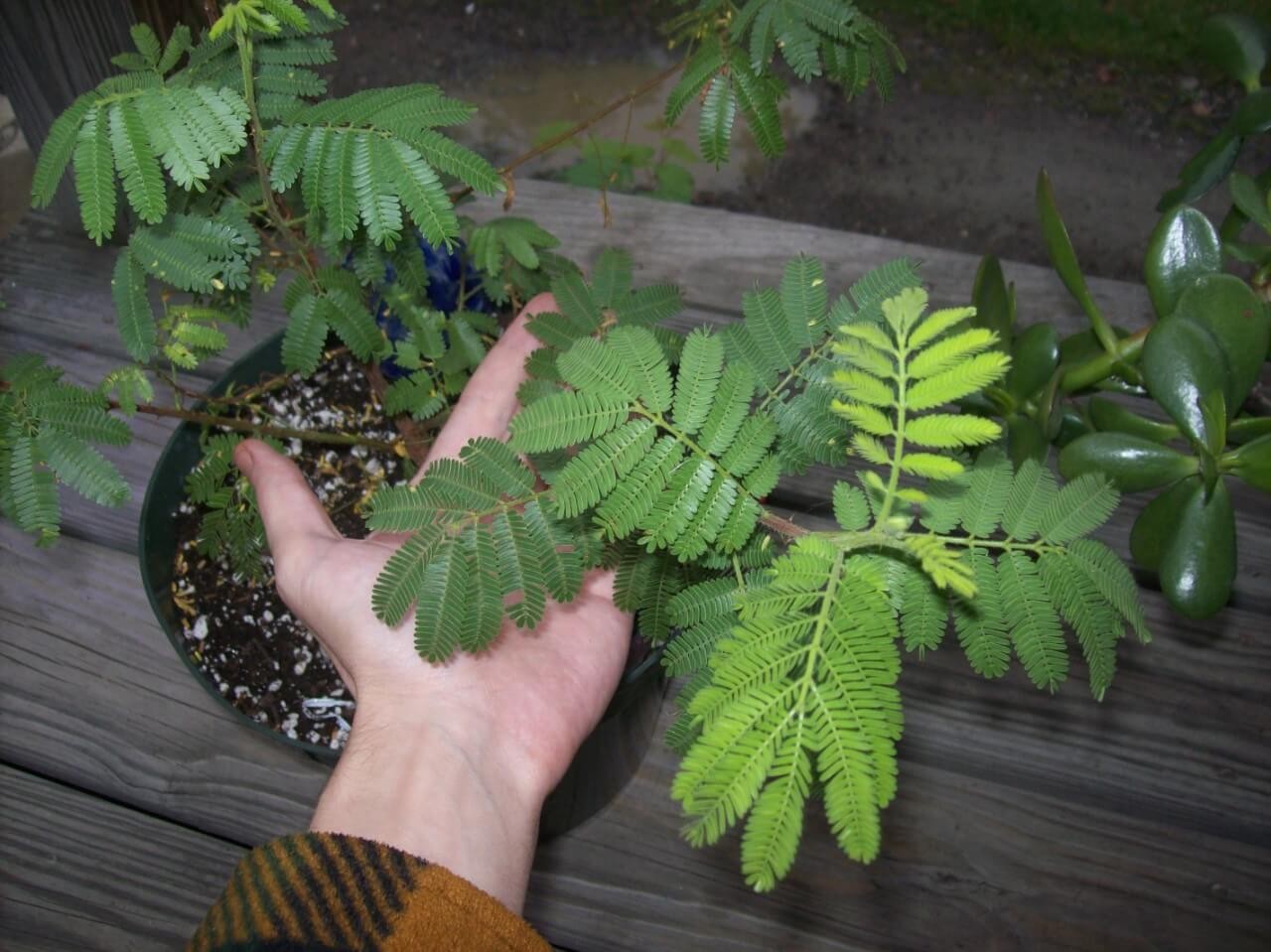
Mimosa has been proven to be an effective treatment for various emergency skin injuries, offering immediate pain relief that can last for several hours. The plant’s unique combination of novel tannins and minerals not only provides protective qualities but also plays a crucial role in the rebuilding of damaged skin cells.
Its efficacy was demonstrated in a significant real-world application, where a powdered preparation was used to treat thousands of burn victims following a natural gas explosion in San Juanico, Mexico. According to a 1997 report by Anton et al., titled ‘Pharmochemistry of New Compounds from South American Plants’, the majority of skin injuries were fully healed within weeks, underscoring the plant’s potential as a valuable treatment option for emergency situations.
Cinchona bark, (Cinchona spp.)
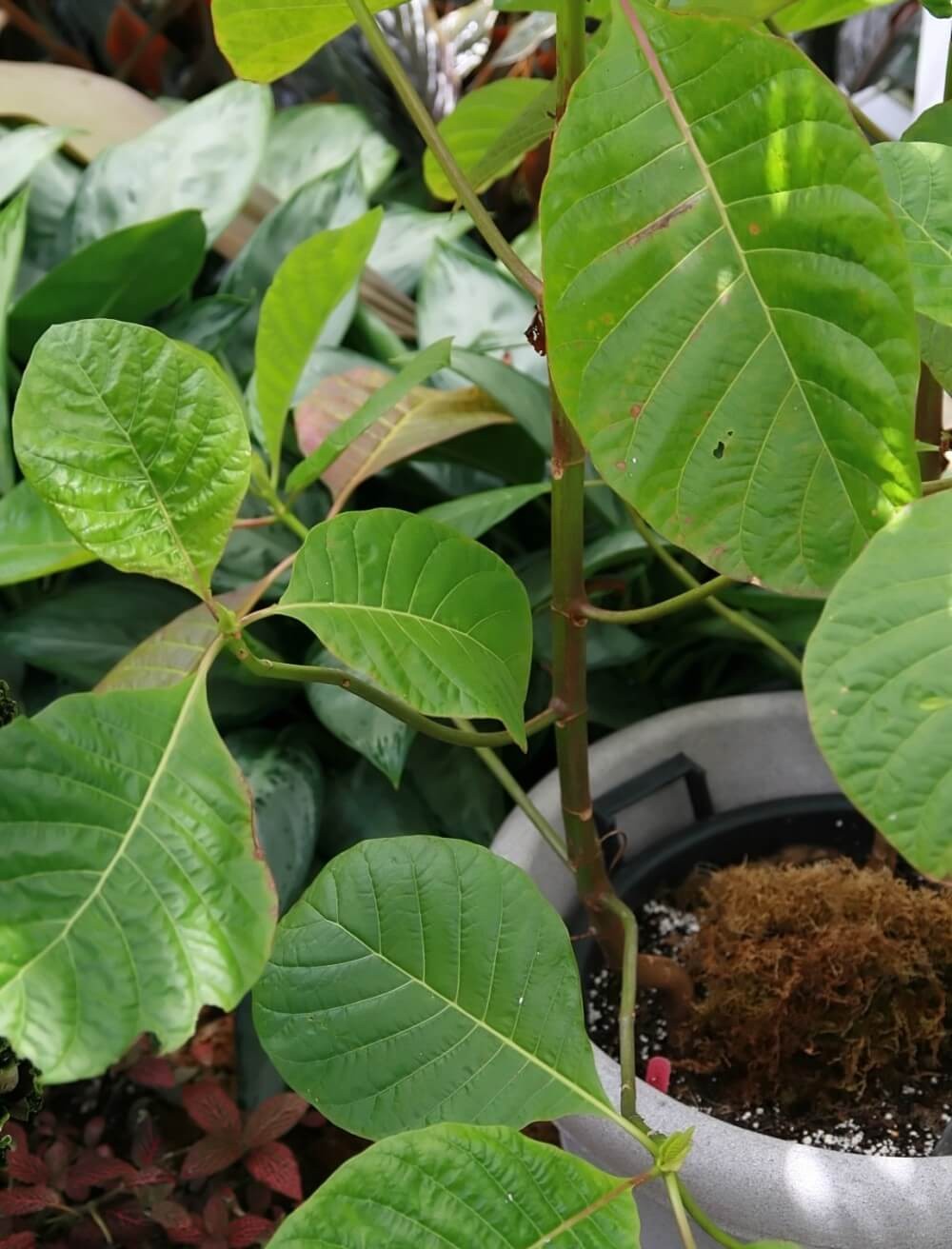
Quinine, the primary treatment against malaria, has its roots in the ancient traditions of Bolivians, who had been using cinchona bark for generations. The first recorded discovery by Europeans dates back to the 17th century. However, it wasn’t until Sir Ronald Ross’s groundbreaking research in 1898 that the mosquito’s role in transmitting the disease was uncovered, leaving nearly two centuries of mystery surrounding malaria.
The isolation of quinine as the active ingredient followed, a process that spanned almost 200 years. During this time, the demand for treatment drove significant financial investments. Despite these efforts, Europeans faced numerous challenges obtaining cinchona bark from Bolivia due to xenophobic attitudes and unfortunate events. It wasn’t until British botanist Clements Markham cultivated cinchona trees using stolen seeds in 1860 that a reliable supply became accessible to the masses.
Today, we have come to realize that various plants contain medicinal substances. The uniqueness of chemical compounds within species, even among identical specimens, underscores the importance of expert consultation when considering plant-based treatments. As such, it is crucial to consult with your doctor before introducing any new medicine into your treatment regimen.
Related Posts
For those looking to expand their plant knowledge, three blog posts stand out as must-reads. The first, ‘How to Grow Rosemary – Easy Guide for Beginners’, provides a comprehensive guide for newcomers to the world of rosemary cultivation. Next, ‘How to Become a Plant Breeder: A Step-by-Step Career Guide’ offers aspiring horticulturists a clear path to pursuing their dreams.
Finally, ‘Beautify Shady Outdoor Locations with Flowering Vinca Plants’, ‘Fall Seasonal Container Plants: Annuals and Perennials for Autumn Baskets’, ‘Foliage Plants for Dry, Shady Gardens’, and ‘Upright Growing Container Plants: Perennial and Annual Plants that Provide Vertical Accents’ showcase a range of plants perfect for enlivening underutilized outdoor spaces or creating visually appealing containers for the fall season.

